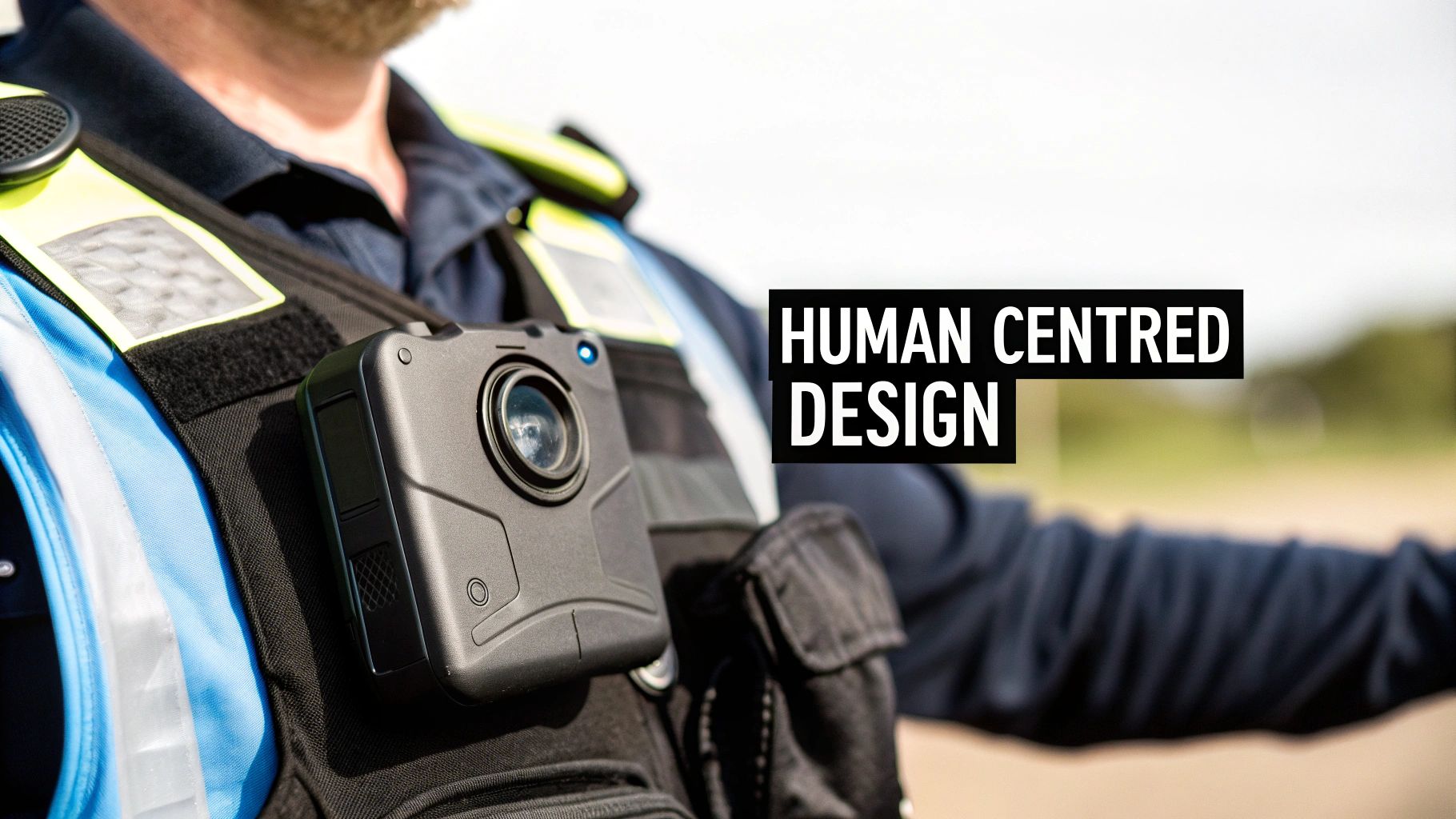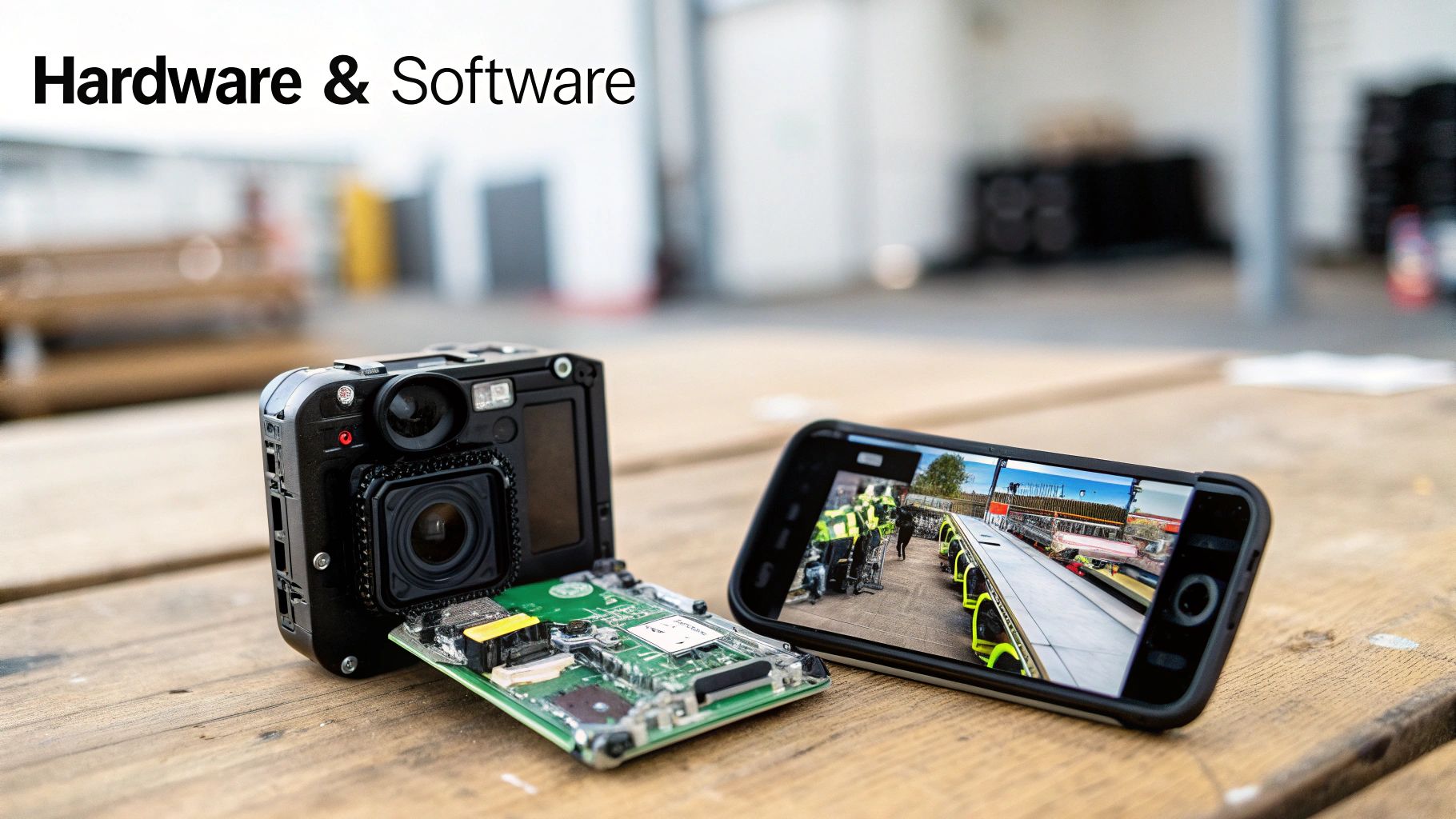The Making of a Best-in-Class Body Camera
What truly separates a standard recording device from a best-in-class body camera?
For organisations here in New Zealand, the answer goes far beyond just capturing video.
A genuinely superior body worn camera is born from a human-centred design philosophy, where every detail is meticulously engineered around the real-world challenges its user faces daily.
Understanding Mission-Critical Challenges
At Mobile Systems, we believe in enabling a foundation of safety, every day.
We see the needs of our partners in security, transport, and public safety, and we are committed to creating solutions that solve their problems.
When a professional reaches for our technology, it’s often in a high-stakes situation where they will be held accountable.
The faultless execution of our equipment is essential for them to maintain safety and transparency.
Satisfying these needs is a significant responsibility.
“Our products can’t simply mirror the design of a consumer device such as a camera or phone,” says one of our lead designers. “Mission-critical teams need devices that not only last an entire shift but can withstand unpredictable weather and temperatures, and significant force. That’s why professional devices are expected to have a longer battery life and be more robust than a device a consumer would typically carry.”
To gain an in-depth understanding of how a mission unfolds and how integrated technology can support it, our product development teams partner with our customers to design innovative and award-winning solutions.
The Optimal Approach to Mission-Critical Design
It all starts with research.
Our teams approach a large cross-section of global and local customers to understand their experience of our products, with the intention of identifying pain points and workflow consistencies.
It’s rare to come away from these interactions without gaining a new insight. Whether that’s learning that customers use our products in an unexpected way, or being shown a problem we didn’t know existed. Being able to meet and chat with our customers is a highlight for our teams.
We adhere to an iterative design process—continuously improving the products we develop until they reach their intended outcome.
We’ll produce a prototype of the product, test it, evaluate it, refine it, and then repeat the process until we've achieved a result that meets our high standards.
The testing process includes regularly presenting the prototype to subject matter experts—many of whom have extensive experience in security and emergency services—as well as our customer focus groups.
Their feedback informs the next round of designs, and once the product is improved, we’ll present it back to the customer group for the final round of feedback.
This user-first approach is what makes specialist suppliers like Mobile Systems invaluable, compared to large department stores that often carry a limited range and lack deep product knowledge.
Diving Deep to Uncover the User Experience

A recurring requirement we gathered from our customers when researching body-worn cameras is their need for intuitive, straightforward technology that easily integrates with their existing products, like a Tait or Motorola radio.
This insight informed the design of features like top displays and simple, multi-function controls.
For example, we found that users are trained to use the emergency button on their two way radio to escalate an incident.
So, the same feature on a body camera would be less beneficial.
Instead, an emergency button which activates a camera recording that can stream in real-time was advised to be much more impactful.
Ergonomics and inclusive wearability were also fundamental to the design.
The buttons and controls are configurable according to the user’s needs and are distinguishable by shape, size and texture.
“An officer needn’t take their eyes off a scene to press a button; safety is never compromised by having to search for a function,” one designer explains. “The body camera is designed to be easily grasped and operated from either hand—with any hand size.”
The research process also highlighted that camera position can vary from the shoulder to the chest. That’s why best-in-class models can be securely mounted to various locations on an officer’s uniform, often using a stable cactus harness or magnetic mount, ensuring the top display can still be clearly read.
Above all, our research reaffirmed that a reliable battery is essential to our public safety customers, and with that, they need an instant battery status reading. You can learn more about battery and charging technologies in our comprehensive guide.
"The most important thing to consider when we design body cameras is that we make sure that the technology we design is transparent to the user."
Integrating Core Hardware and Software

We are in a unique position at Mobile Systems because we don’t just build radios, body cameras, and video evidence software. We create end-to-end solutions for use across the entire health and safety workflow.
By listening, observing, and developing solutions that offer integrations designed to automate tasks, our customers can focus on the mission instead of the technology.
We also serve our customers with a portfolio that includes numerous devices from brands like Hytera and Motorola, each speaking to their varying needs.
Our body cameras incorporate different connectivity requirements: Wi-Fi suits situations which require secure and reliable connectivity for data offload, and LTE (cellular) is available for those in external settings where Wi-Fi isn't always available—or there’s a need for dependable live-streaming over a cellular network.
Built Tough for New Zealand Conditions
A best-in-class body camera must be a resilient work tool. This is where industry certifications really matter, providing a clear benchmark for durability.
Key standards include:
- IP Ratings: An IP67 rating means the device is completely sealed against dust and can handle being submerged in water. This is non-negotiable for New Zealand's variable weather. Learn what IP67 means for professional equipment in our guide.
- MIL-STD (Military Standard): These tests ensure a product can withstand shock, vibration, and extreme temperatures, proving it can handle drops and rough treatment in a 4wd or on a worksite.
For any professional in the field, these ratings are a promise of performance.
Protecting Evidence with a Digital Chain of Custody
Capturing high-quality video is only half the battle.
A best-in-class body worn camera system is defined by its ability to create and maintain an unbreakable ‘digital chain of custody’. This ensures evidence is secure from the moment it’s recorded until its potential use in court.
Securing Data from Capture to Cloud
Security starts on the device itself with end-to-end encryption.
When a user returns to base, the camera is placed into a smart dock, which automatically begins a secure data transfer to a protected server. This automated process, using a secure network, removes human error.
To further strengthen the evidence, systems embed tamper-proof digital watermarks with encrypted metadata, including:
- The unique device and user ID.
- A precise timestamp.
- GPS tracking data showing the exact location.
This information is locked to the video file, creating an unchangeable record. Any attempt to alter this data would be immediately flagged. This is far more secure than consumer-grade dashcam footage.
This demonstrates that a reliable power source and durable construction are the foundational elements that make a device truly field-ready.
The Challenge of Data Storage
Maintaining this secure ecosystem creates a significant operational and financial challenge—data storage.
Police Association president Chris Cahill has noted that while officers support body cameras for creating an accurate record, the biggest hurdle is funding the hardware and the immense ongoing costs of secure digital storage. You can read more about why body camera adoption faces these hurdles in New Zealand.
Sophisticated evidence management software is key. It allows authorised personnel to securely access and share evidence with controlled permissions, all while logging every action in a detailed audit trail, essential for complying with New Zealand's privacy laws. For large-scale operations, implementing an AI document management system can streamline this process. For the most advanced security, organisations are even exploring trustless data solutions powered by blockchain.
Creating a Connected Ecosystem for Your Team
In today's world, a body camera cannot operate in isolation.
Its true power is realised when it becomes the central hub in a wider communication ecosystem, transforming from a passive recording tool into an active asset for situational awareness.
A genuinely connected worker is a safer, better-informed, and more efficient worker.
From Standalone Device to Team Player
Modern body cameras from brands like Hytera and Motorola are built with multiple connectivity options.
- Wi-Fi Connectivity: For fast, secure offloading of large video files back at base.
- Cellular Networks (LTE): A game-changer for field operations, enabling live-streaming of video to a command centre for real-time oversight and support.
Seamless Integration with Radio Networks
One of the most powerful integrations is linking a body camera directly with professional radio networks, such as a Tait TP9355 or Motorola R7 DMR system.
When an officer activates their radio's emergency button, the body camera can be configured to start recording instantly.
This seamless connection ensures that video evidence is perfectly synchronised with radio logs, creating a comprehensive record of events.
This approach also works with PoC (Push-to-talk over Cellular) devices, which function like a walkie talkie over the cellular network, further unifying the team's communication tools.
A connected ecosystem removes friction. By automating tasks and linking devices, it allows frontline professionals to focus entirely on the mission, not on managing their technology.
By prioritising interoperability and having an innate curiosity about our customer’s workflows, there are endless opportunities for us to develop our products and continue to meet the needs of our partners. To see a great example, check out the Motorola VT-200 Body Worn Camera.
At Mobile Systems, we pride ourselves on providing expert guidance. Explore our range of communication and security solutions to find the right fit for your team.


